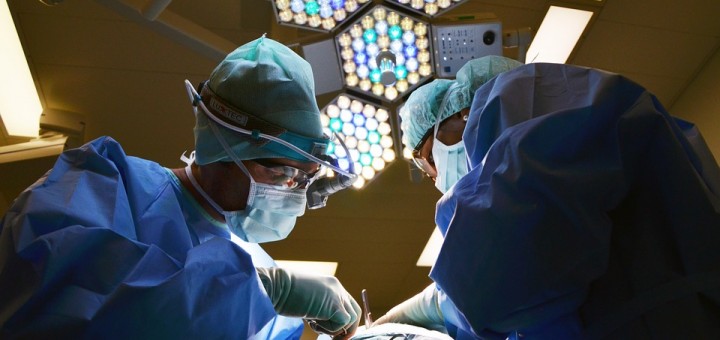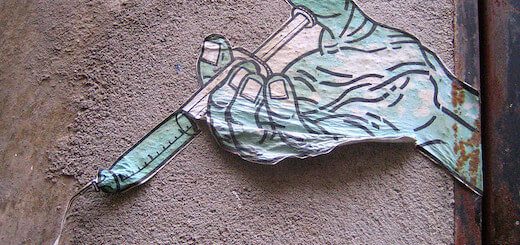“Imaginative Reconstruction of Reality”: Problems with Causation in Sacks v Ross

On October 5, 2017, the ONCA released its decision (2017 ONCA 773) on an appeal for a negligence claim made by Jordan Sacks, a man who suffered septic shock and amputations as a result of complications from bowel surgery performed at Sunnybrook Hospital. Although the jury found that the hospital, three of its doctors, and a nurse were negligent in their care of Mr. Sacks, the complicated issue of causation prevented recovery for his injuries.
Background
Facts
In 2008, then-36-year-old Mr. Sacks had surgery to remove the narrowing of his bowel (a result of his Crohn’s disease). Dr. Ross, assisted by Drs. Bendzsak and Kanji, performed the surgery at Sunnybrook Hospital without any surgical complications. Two days after the surgery, however, Mr. Sacks complained of abdominal pain and distention, and severe shoulder pain. The doctors ordered blood work to test for infection and other possible issues, including anastomotic leak, which is a complication that can occur in 2-5% of surgeries such as Mr. Sacks’s. Anastomotic leak is the leakage of stool into the abdominal cavity as a result of the sutures holding the ends of the bowel coming apart. It can be life-threatening if not treated immediately, because a large amount of bacteria from the stool can cause infection, sepsis, or even septic shock. Symptoms of anastomotic leak include low blood cell count, increased heart rate, lowering blood pressure, as well as abdominal pain and distention, and shoulder pain as experienced by Mr. Sacks.
Nurse Raye-Ilogu entered the bloodwork as a STAT order, which the hospital usually makes available within one hour. However, the hospital lab did not enter the results until over four hours later. Despite the unusually long delay, neither of the nurses, nor Drs. Benzsak and Kanji followed up on the status of the bloodwork. In the meantime, Nurse Li examined Mr. Sacks and found that his blood pressure was low and heart rate elevated, but did not report these findings to the doctor, and only administered morphine for Mr. Sacks’s pain.
When the bloodwork results finally came in, they showed an abnormal drop in white blood cell count and were entered into the hospital’s computer system as CRITICAL. However, no one attending Mr. Sacks became aware of the bloodwork results until the following morning, when Dr. Ross came on duty. Dr. Ross then ordered more bloodwork, which confirmed infection requiring prompt treatment, he ordered a STAT CT scan in order to ascertain the source of the infection. The CT scan, which could not be performed until the following afternoon, confirmed the anastomotic leak.
Shortly after the CT scan, doctors operated on Mr. Sacks, who was in septic shock by this time, in order to repair the leak. Over the next few days Mr. Sacks went into kidney failure and within the following months he required several surgeries and was put into a medically-induced coma for three months. In the end, the gross contamination of the anastomotic leak and the resulting sepsis led to the amputation of both Mr. Sacks’s legs below the knee and all ten of his fingers.
Trial
At the jury trial, the plaintiffs argued that the delay in diagnosis and treatment, which was the cumulative result of the medical professionals’ errors, caused Mr. Sacks’s injuries. The defendants, however, argued that the delay did not cause Mr. Sacks’s injuries, but rather that the injuries were unavoidable because he contracted a rare and unrecognized flesh-eating disease in his lower back which could not have been diagnosed or treated when it first appeared.
The plaintiffs found the traditional “but for” test from Clements v Clements 2012 SCC 32 wanting, and submitted that a “global but for” test should be applied, arguing:
Here, it is not a question of “which defendant”, but of multiple defendants’ compounding contributions, no one of which can be considered necessary on its own, but each of which composed part of a necessary cause (the delayed diagnosis). (para 123)
They further argued that the “but for” test as set out in Clements would confuse the jurors, particularly Chief Justice McLachlin’s observation that “[i]nherent in the phrase “but for” is the requirement that the defendant’s negligence was necessary to bring about the injury” (Clements, para 8). They submitted that such wording suggests that each defendant’s conduct must be the sole cause of the injury, but in delayed diagnosis cases, one person’s conduct is rarely the sole cause (para 68). Instead, the plaintiffs requested that the jury be asked to determine whether each defendant’s breach of the standard of care “caused or contributed to” Mr. Sacks’s injuries (para 70). The SCC also established in Clements that in exceptional cases “where it is impossible to determine which of a number of negligent acts by multiple actors in fact caused the injury” a plaintiff may recover using the “material contribution to risk of injury” test rather than the “but for” test (Clements, para 13). However, the trial judge found that this case was not such an exception, and found that the standard language of causation from Clements more appropriate to present to the jury, as the proposed “caused or contributed to” language would confuse the jury (paras 72-73).
Although the jury found that five of the defendants (Dr. Ross, Dr. Bendzsak, Dr. Kanji, Nurse Li, and the hospital) had breached the standard of care, they did not find that any of those breaches caused Mr. Sacks’s injuries.
Appeal
The Sacks family appealed to the ONCA, arguing that the trial proceeded on an incorrect test of causation, which also resulted in improper jury questions and instructions.
Causation
The issue of causation in negligence has long been problematic in Canadian jurisprudence and, as Chief Justice McLachlin has noted, “[m]uch judicial and academic ink has been spilled over the proper test for causation” (para 40, quoting Clements). It becomes significantly more complex when there are multiple tortfeasors, as the Clements “but for” test seems insufficient to answer whether any or all of the defendants caused the plaintiff’s injuries. Because this case involves multiple tortfeasors and delayed diagnosis and treatment, Justice Lauwers suggests that the “cognitive process” of the “but for” test “does not unfold as simply” as SCC jurisprudence might suggest (para 55).
Causation in Mr. Sacks’s case was further complicated by the fact that the negligence at issue was not an act, but an omission. As Justice Lauwers wrote:
When what is in issue is not the defendant’s act, but an omission, the trier of fact is required to attend to the fact situation as it existed in reality the moment before the defendant’s breach of the standard of care, and then to imagine that the defendant took the action the standard of care obliged her to take, in order to determine whether her doing so would have prevented or reduced the injury. (para 46)
Therefore, the “but for” inquiry in this case was a convoluted exercise in imagination, which would surely be difficult for any judge, let alone a jury of laypersons.
Justice Lauwers noted that, regardless of whether the negligence is an act or an omission, the trier of fact must conduct the same three-part inquiry: 1) what actually happened; 2) what would likely have happened had the defendant not breached the standard of care; and 3) how should the fault be allocated amongst the defendants (para 47). The second step involves an “imaginative reconstruction of reality” which results in two possible outcomes: the evidence suggests either that the plaintiff’s injuries would have occurred regardless of the breach of the standard of care, or that the plaintiff would not likely have been injured without the defendant’s act or omission, thereby satisfying the “but for” test (para 48). Moreover, this “imaginative reconstruction of reality” becomes a labyrinthine task when there are multiple tortfeasors because “the trier of fact … must ‘chunk out,’ or separate for analytical purposes, the events in the flow, and apply the causal reasoning process to each event in sequence” (para 100).
Holding
Despite his apparent recognition of the difficulties presented by the “but for” test in cases with multiple tortfeasors, Justice Lauwers rejected the respondents’ “global but for” test. Instead, he advocated for a tiered structure of jury questioning: first asking a question of plain fact (such as, “Did the delay cause the injury?”), followed by asking whether the behavior of each defendant breached the standard of care, and if that breach caused or contributed to the injury (paras 130-32).
Justice Lauwers noted that a “jury verdict in a civil trial will be set aside only if it is so plainly unreasonable and unjust as to satisfy the court that no jury reviewing the evidence as a whole and acting judicially could have reached it” (para 133). Furthermore, he observed that the expert medical witness on both sides presented differing theories of causation “clearly and unambiguously” (para 134), and that they would not have found in Mr. Sacks’s favour even if the instructions had been posed differently, stating: “Not even perfect jury questions and instructions would have changed the verdict” (para 174). Therefore, the ONCA dismissed the appeal, awarding $40,000 in costs to the doctors and $30,000 to the hospital.
Conclusion
This case is a perfect example of the problems with the “but for” test for causation. It is apparent that such a test only works when there is one tortfeasor who has committed a simple act. As soon as more actors, omissions, delays, or any other complication is added to the equation, the Clements “but for” creates a confusing mess that can result in a gross injustice, as was the case for Mr. Sacks.







Join the conversation